Frogmore & The Gold Eagle
“I was, let’s say, witness to a number of amazing experiences during these months of recovery, of realignment, of rebirth. There were escapades of utterly insane, reckless high speed chases through farmers’ fields; of a pickup truck disappearing beneath the waves; of midnight runs to a bootlegger’s cabin; of providing sanctuary for a friend fleeing for her life; of groaning, moaning mornings hung over from excess. But I survived. I found new interests, new knowledge. Friends were still dying, back in Washington, in New York, and on the West Coast. But now friends were living, friends who had been ill were still with us and doing well. I had settled in, finally, where I had meant to be.”—William A. Balk, Jr.
Epicurus’ Porch
By William A. Balk, Jr.
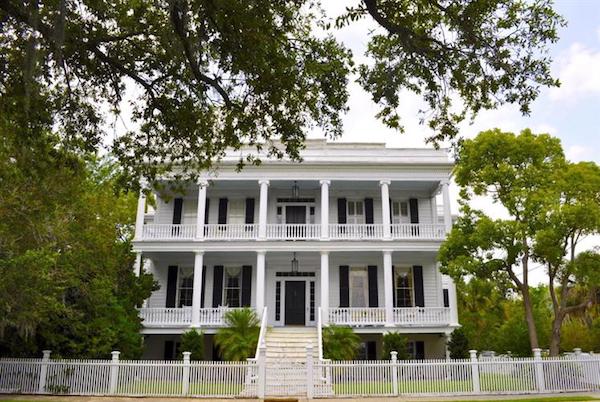
BEAUFORT, South Carolina—(Weekly Hubris)—July 2018—After decades of cosmopolitan life in the nation’s capital, and nearly a decade of watching more than a hundred friends die in the viral plague which left us survivors pained and angry, depleted, exhausted and, finally, facing a future deprived of much of a gifted—and loved —generation, I finally returned in 1990 to the state of my ancestors and the places where I grew up.
Beaufort is where our family spent summers. My father recalled his own childhood escapes to Beaufort, when his parents would pile all four boys into their Model A for the hours-long drive, much of the way over still-unpaved highways. The family would stay downtown in the handsome village of Beaufort; and, after the Civilian Conservation Corps in 1935 created the magnificent state park, Hunting Island, long days were spent in the surf and in the maritime forest there, a trip of only a few miles from Beaufort, but which took an hour or more, depending on drawbridges and shrimp boats.
They would usually take rooms downtown at either the Sea Island Hotel at one end of the waterfront (a large two-story wooden structure with columns and porches across the front, to catch the breezes from the bay) or at the Gold Eagle Tavern at the opposite end of Bay Street. Each inn had hosted luminaries and dignitaries over many years, eager to savor the exquisite beauty of the area and of the town itself.
My father and his brothers would spend as much time as possible near, on, or in the water, sometimes borrowing the sailboat of other local boys in town, sometimes fishing off the new bridge from Beaufort to Lady’s Island. Everyone else in Beaufort, of course, did the same, escaping to the water at every opportunity that would arise.
By the time I and my younger siblings were old enough to make the trip, we, too, would head to Beaufort for summer vacations, the family crammed into the Plymouth sedan or, later, as the family grew, the Ford station wagon—and, then, the Ford Econoline “bus”— for the long drive.
Much of the road had been paved with concrete instead of asphalt, so we got to know well the ka-thunk, ka-thunk, ka-thunk of the joints between the concrete sections of pavement, repeated once a second for miles and miles. Those same miles were lined with great fields of cotton or massive stands of native loblolly and longleaf pines, interrupted every so often by little towns like Kline (whose vast orchards of peaches always required a stop to buy a peck from the Chappell family), Brunson (where the tiny hexagonal trainmaster’s station was a watched-for waypoint for our journey), and Yemassee (which had served for years as the destination trainstop for all recruits headed to the Marine Barracks at Parris Island).
After Yemassee, we knew we were getting close. A few miles farther, at Pocotaligo (one of the chief villages of the Yamassee Indians in the colonial era, but now buried beneath highways running north, south, east, and west) we would encounter our first whiff of the marsh as we crossed the Pocotaligo River. From that point onward, the expanse of spartina grass, snaked with tidal creeks and saltwater rivers, saturated us with the glorious scent of salt and fish, hot sun and green grass, and the fecund, black base of it all, pluff mud.
It was the surf, the roar of the waves, and the intensity of the sun at the beach which was the pull of these trips for me when I was young. As I grew older, I began to yearn even more for that inimitable smell of the marsh and the comforting regularity of the tides’ flood and ebb, the clock which set the pace and time for each day and for every creature.

When I returned as an adult to live at the edge of the water, I had convinced myself it was to reconnect to my roots, to escape the rush and bustle of city life, to be able to breathe deeper and more slowly. I had not realized the extent to which my escape from Washington was a desperate attempt at recovery and an offering up of myself finally to the deepest mourning.
The next year and a half I spent almost in isolation, exploring the waterways, driving country roads, and learning the ways of fishing from my dock or shrimping from my boat, catching crabs in the tidal creek that ran with the tides past the bluff where I lived.
I had neighbors nearby, to the right and the left: on the right, an elderly couple who appreciated an occasional hand with tasks, and who always had tales about the old ways and the old times in Beaufort; on the left, a man almost exactly my age—loud, gruff, often drunk, and much enamored of his guns.
The Macks, the older neighbor couple, warned me about Bubba. He was nothing but trouble, they told me; he might have shot someone, might have had something to do with the death of his own father, who—they insisted—had been of even worse character. Bubba’s mother lived down the road; she had been a Marine before meeting Bubba’s father and settling for a life out in the country with a wild man and raising a rogue and rascal as a son.
Bubba, as it happened, seemed to like me. He was pleasant enough to look at, certainly, in a dark, rough way, and he, too, had an endless supply of stories to tell, some of them funny, some frightening, and almost all imparting some knowledge of him, of the way it used to be in the Lowcountry, or of the waters. Always the waters.
Bubba made his living on the water. He was a crabber, running crab pots in the channels and rivers for miles around Saint Helena Sound, the Combahee River, and the Coosaw River. His flat-bottomed boat could slide up small creeks at low tide to retrieve a lost crab pot and could stack loads of bushel baskets teeming with blue crabs to be brought to “the hill”—meaning dry land—for processing or for sale to refrigerated trucks carrying them north to Maryland to be sold as “Chesapeake Blue Crabs.” There were many crab houses in Maryland dependent on a steady supply of crabs, but the Chesapeake had become both polluted and overfished. They had no choice but to look beyond the Bay.
Conscious of the warnings the Macks had given me, I nevertheless was overjoyed to be asked to join Bubba on his daily rounds on the rivers. I learned to haul the pots aboard, release the crabs into the bushel baskets (always returning those too small to the water), dispose of the old bait, rebait the pot, and throw the pot and its attached line and marker-float to the river, all in a minute or less.
Placement of the pot was vital: too far out of the main channel, and the number of crabs passing by was greatly reduced; too close to the main flow of water, and the pot would wash away with the tide—an expensive loss to the waterman.
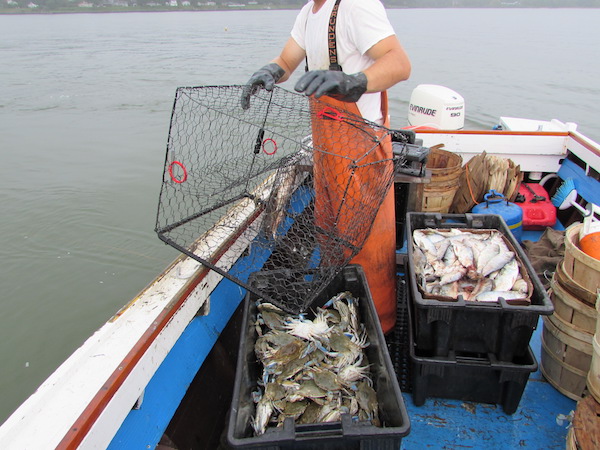
Correct placement was essential for another reason. Crabbers held claim to quite specific areas in the rivers. Placing your pots in someone else’s area guaranteed a fight —usually bloody, at best—and stealing the contents of someone else’s pot literally put the thief’s life at risk. All the watermen were armed—always.
At the end of a run, I’d help Bubba load the bushels of crabs into his truck and take them to the local buyer, Dude, who supplied restaurants and families for miles around. Dude’s rough concrete block building served as a quick-stop for soft drinks, candies, and snacks, and there were a number of large ice chests behind the counter which held a dozen varieties of beer. There was no license to sell beer, of course, so access to those hidden areas could be gained by the deposit of a few bills on the counter. Even on Sundays. Even after legal hours.
Dude’s establishment also had a number of card-game machines—which at the time were not quite slot machines, so were ignored by the constabulary (who had friendly access to the hidden ice chests, too). Even after those machines were specifically outlawed, we’d find several gamers waiting their turn at one of the five or six which remained.
I was always arriving with Bubba, was always at these gatherings of watermen with Bubba, so I was accepted among them. To be sure, the acceptance might come with a raised eyebrow, and I might well have been chased out if I’d arrived on my own; but Bubba had thrown his weight around for all his life, and these men knew better than to make trouble when it wasn’t necessary.
I was, let’s say, witness to a number of amazing experiences during these months of recovery, of realignment, of rebirth. There were escapades of utterly insane, reckless high speed chases through farmers’ fields; of a pickup truck disappearing beneath the waves; of midnight runs to a bootlegger’s cabin; of providing sanctuary for a friend fleeing for her life; of groaning, moaning mornings hung over from excess. But I survived. I found new interests, new knowledge. Friends were still dying, back in Washington, in New York, and on the West Coast. But now friends were living, friends who had been ill were still with us and doing well. I had settled in, finally, where I had meant to be.
![]()
Anyone who has been privileged to live near the sea knows well the bounty such proximity can provide. Each locale has its own native fruits de mer, and the variety of peparations and flavorings can make a bay or coastline—or even a singular café— celebrated around the world.
The Lowcountry of South Carolina may have several such claims to gustatory fame, but one in particular has gained some notice in distant and fancy centers of food culture. I speak of Frogmore Stew.
The tiny village of Frogmore, halfway between the city of Beaufort and the beach at Hunting Island, right at the center of Saint Helena Island, is surrounded by productive farmland. The tidal creeks run right up to the shops, restaurants, and homes, and many docks offer easy access to the best crabbing, shrimping, and fishing areas anywhere around.
Almost any gathering of size in the Lowcountry, if the crowd is to be fed well, will offer Frogmore Stew as the draw. It is a simple dish, celebrating the best of local offerings, and it reaches its zenith when made in batches large enough to serve at least a dozen people.
When we make the stew, it is usually for 15 to 20 people. We need a big fire or a roaring gas burner, a 20-gallon pot, and about ten pounds of potatoes, ten pounds of a spicy sausage, a couple dozen ears of corn, half a bushel of live crabs (which we clean beforehand, but that is non-standard), 15 pounds of shrimp, and a whole can of seasoning. Timing is important, so ingredients are added at precise moments, and when the perfect time arrives, the whole contents are lifted out of the water and poured out on newspapers spread on the tabletop. It is consumed with beer, using hands, crab picks, and whatever else is useful.
The cooks pray that there was enough to have some seafood and potatoes left over, to make the most superb seafood salad ever tasted.
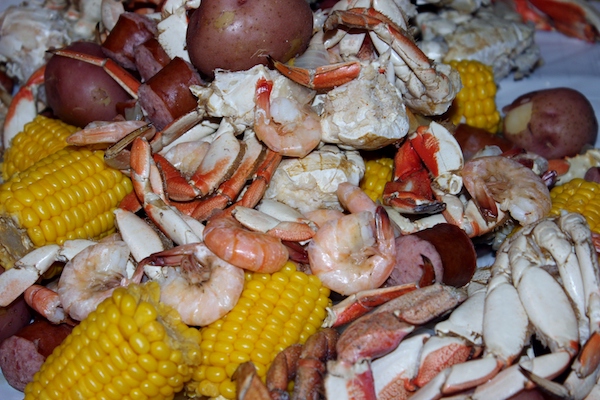
Perhaps you aren’t planning a feast for two dozen guests. Fortunately, my old friend, the culinary historian and writer (who also hails from the Lowcountry), “Hoppin” John Martin Taylor, has thought about preparing Frogmore Stew for smaller gatherings, and I have ruthlessly stolen from his recipe in the classic cookbook, Hoppin’ John’s Lowcountry Cooking, to be combined with my family’s traditions to offer a reasonable (fabulous!) version for the small kitchen. (When I was first fed a lunch by John, I discovered his own kitchen was completely enclosed in a space the size of my closet. It hampered him not one whit.)
![]()
Recipe
Frogmore Stew, with thanks to Hoppin’ John Taylor
To serve 8
Ingredients
Scant ¼ cup Old Bay Seafood Seasoning
2—3 gallons water
2 lbs kielbasa or spicy smoked link sausage, cut in 1- 2 inch pieces
1 ½—2 lbs small red potatoes, cleaned
8 ears fresh corn on the cob, shucked and cut into 2-—3 inch pieces
6 blue crabs, cleaned (many recipes, including John’s, omit the crabs)
4 lbs shrimp, headed, shell on
First, to clean crabs, they must be fresh, of course. We remove the legs and claws and reserve them. The top carapace is pulled off and discarded, the “apron” at the bottom is pulled off and discarded, the now-exposed innards are cleaned by removing the pale “fingers” along each side and the little feeding parts at the top are removed—all discarded. The innards in the center include the tomalley, and some insist on keeping that; usually, we just clean all that out. Finally, we usually split the body down the center, leaving two halves, each filled with crab meat in channels under the thin shell.
Set the bodies aside with the legs and claws.
Fill a 5-gallon pot about halfway with water; add the Old Bay seasoning and the potatoes, and bring to the boil. Add the pieces of sausage and return to the boil, uncovered, for 5 minutes.
Now, add the crabs, wait 2 minutes; add the corn, wait 5 minutes; then add the shrimp and stir.
We turn off the heat after adding the shrimp. We then watch for the shrimp to turn completely pink. This usually takes 2 or 3 minutes; with larger shrimp, longer.
Once the shrimp are cooked, drain everything immediately and serve.
![]()
Note Regarding Images: Two images used in this article are from Wikimedia Commons and are used under the terms of creative commons: the image of the salt marsh is by William D. Bone; the image of hauling blue crabs is by Bckcd. The images of the home on Bay Street and of the Frogmore stew are by the author.
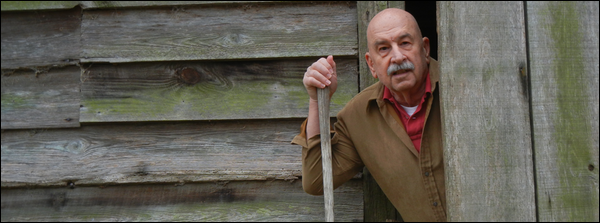
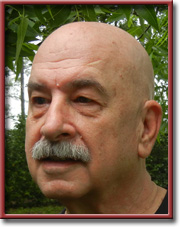
7 Comments
Will
After I finished the piece above, I wanted to let John Taylor know I’d swiped from his Frogmore Stew recipe. John suggests – after having served the dish to many eaters “from away” – some squeamish diners are grateful if the shrimp are shelled and cleaned (which is why we clean the crabs into almost-ready-to-eat chunks); native chefs eschew such niceties for their stews, adding considerable flavor to the liquid and to the dishes cooking in that liquid. A major suggestion from John was to double the amount of spicy sausage; sometimes this will leave a larger portion of shrimp uneaten (yes, that is a hopeful plan), and, thus, a bigger seafood salad to be made.
Jane Balk Miller
Will, I’m so relieved to know I’ve been doing it right all these years! (LOL). I will say that I had a friend make a Frogmore Stew for a group and he peeled the shrimp first. I was horrified! The act of peeling the shrimp as you eat slows the pace so that more conversation can take place. That, of course, is the Southern way – to drag out the conversation any way we can. On another note, when I was married to my late Slovak-descent husband from Cleveland, George, I had to add at least an extra pound of sausage for all his family. But it added even more flavor. Just as having them there added more flavor!
Sandra Lee
Reminded me of my childhood summers (or parts of) spent in Charleston with cousins. The descriptions of the sound of the concrete roads and the smell of the marshes gave me a jolt of memory. Monk’s Corner, Kingstreet, basket makers on the side of the road, Spanish moss all let me know we were getting close. Thank you.
Sandra Lee
So just discovered that I have never actually know that Kingstreet was actually Kingstree or that Monk’s Corner was Monck’s Corner. I never had reason to question what I thought I was hearing.
William Balk
lol, Sandra Mae! That’s the way most people, I think, “see” Monck’s Corner, especially since the Trappist monks rule the roost at Mepkin Abbey! Kingstreet also makes sense, since nobody would name a town after a tree! Thanks for the comments, love; I’m glad the memories it brought back were good ones.
judy pearce
How does one clean live crabs before cooking? Aside from very carefully…
William Balk
Judy – it’s not for the squeamish. First, you remove the claws and save them. After that, it’s easy. Remove the apron – the lower flap on the bottom shell, shaped either like the dome of the capitol or like the Washington monument). You remove the carapace (I usually remove the legs before lifting off the carapace) by lifting up the top shell while holding firmly the bottom body section. The interior now exposed, remove the “deadman’s fingers”, and clean out the gooey, gummy loose innards. (This includes the above mentioned tomalley, a delicacy. So few of our guests want the tomalley, we usually just discard it along with the rest. Clean the remaining body; we usually split it in half. The body halves, the claws (and usually the legs as well) go into the stew. Follow recipe above.